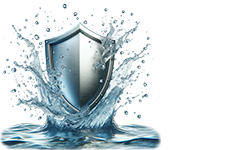At Safe Water Solutions, we believe that every homeowner deserves clean, safe, and healthy drinking water. Unfortunately, many people unknowingly expose themselves and their families to harmful contaminants like chlorine and lead, which are commonly found in tap water. While these substances are often overlooked, they can pose serious health risks over time. In this article, we’ll dive into the dangers of chlorine and lead in your drinking water, how they affect your health, and what you can do to protect your home.
Chlorine in Tap Water: A Necessary Evil?
Chlorine has been widely used for over a century to disinfect public water supplies, eliminating bacteria, viruses, and harmful pathogens. While this treatment process is essential for preventing waterborne diseases, the presence of chlorine in your drinking water comes with potential health risks that shouldn’t be ignored.
The Risks of Chlorine in Drinking Water
- Increases Cancer Risk – When chlorine interacts with organic matter in water, it forms disinfection byproducts (DBPs) like trihalomethanes (THMs), which have been linked to an increased risk of bladder and colorectal cancer.
- Harms Your Skin & Hair – Chlorine strips natural oils from your skin and hair, leading to dryness, irritation, and even premature aging. Many people who experience persistent skin issues (eczema, rashes, itchiness) may be reacting to chlorine exposure.
- Affects Respiratory Health – Inhalation of chlorine vapors, especially while showering, can trigger asthma symptoms and worsen respiratory issues. Chlorine exposure has even been linked to an increased risk of lung problems in children and adults.
- Alters the Taste & Smell of Water – If your water has a strong chemical taste or smells like a swimming pool, it’s likely due to high chlorine levels. This can make staying hydrated more difficult for your family.
Lead in Tap Water: A Silent but Serious Threat
Unlike chlorine, lead isn’t added to water intentionally—but it can leach from old pipes, plumbing fixtures, and service lines, contaminating your drinking supply. This toxic metal has been used in plumbing systems for decades, and many homes still have lead pipes or solder that can introduce lead into the water.
Why Is Lead So Dangerous?
- Irreversible Neurological Damage – Lead exposure is especially harmful to children, causing developmental delays, lower IQ, learning disabilities, and behavioral issues. Even low levels of lead in water can have long-term effects.
- Increases the Risk of Cardiovascular Disease – In adults, lead exposure has been linked to high blood pressure, kidney damage, and an increased risk of heart disease.
- Affects Pregnant Women & Infants – Lead can pass through the placenta, putting unborn babies at risk of premature birth, low birth weight, and cognitive impairments. Infants who consume lead-contaminated water are especially vulnerable due to their developing bodies.
- Can’t Be Boiled Away – Unlike bacteria, lead cannot be removed by boiling water. In fact, boiling can increase the lead concentration, making it even more dangerous.
How to Protect Your Family from Chlorine & Lead Contamination
If you’re concerned about chlorine and lead in your tap water, the best step is to get your water tested. Many homeowners assume their water is safe simply because it looks clear, but contaminants like lead are invisible, tasteless, and odorless—making detection nearly impossible without proper testing.
At Safe Water Solutions, we offer FREE in-home water testing to help homeowners identify and eliminate dangerous contaminants. Once we analyze your water, we’ll recommend the best filtration and purification system to ensure your family has access to clean, safe, and great-tasting water every day.
Frequently Asked Questions
Q1: How do I know if my tap water has chlorine or lead in it?
A: While chlorine often leaves a noticeable smell and taste in water, lead is completely undetectable without a water test. The best way to determine if your water is contaminated is by scheduling a free professional water test with Safe Water Solutions. Our test will analyze the levels of chlorine, lead, and other potential contaminants to give you a clear picture of your home’s water quality.
Q2: What’s the best way to remove chlorine and lead from my drinking water?
A: The most effective way to remove chlorine and lead is by installing a high-quality water filtration system. At Safe Water Solutions, we offer whole-house filtration systems and reverse osmosis systems that are specifically designed to remove harmful contaminants, ensuring your family has pure, safe, and great-tasting water at all times.
Q3: Does a refrigerator or pitcher filter remove lead and chlorine?
A: While some basic pitcher filters and refrigerator filters can reduce chlorine, most do not effectively remove lead or other heavy metals. These filters typically use carbon-based technology, which helps with taste and odor but does not provide full protection against dangerous contaminants. A certified water filtration system, such as a reverse osmosis system, is the best way to ensure comprehensive water purification.
Take Action Today: Get a Free Water Test!
If you’re unsure about the quality of your home’s water, don’t take any chances. At Safe Water Solutions, we believe that every family deserves access to pure, clean, and healthy drinking water.
🔹 Schedule your FREE water test today! Our team will come to your home, test your water for contaminants, and provide expert guidance on the best water purification solutions.
Don’t wait until it’s too late—protect your family from hidden water dangers now!

